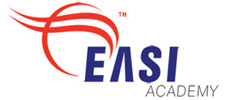 |
Component-Based Learning (Outline) |
Component-based refers to a theory of learning (see Freeman) that involves breaking down an action into simple component parts and teaching each part individually, allowing the student to assemble the parts into a meaningful action through their own individual initiative and creativity. This is how children learn to walk and how we learn almost anything in a manner that allows the learned concept or action to be adaptable to changing circumstances. This is a critical aspect of how the human brain evolved because it evolved over some 3 million years to be able to adapt or die. It is the form of learning that the brain is best suited to use to address the complex and changing environments in which humanoids evolved. By learning components of action, rather than full action sequences as a single unit, those components can be reused in a variety of ways to facilitate new actions and to adapt to new circumstances. This is key for competition in which circumstances are continually changing. Teaching an action as a complete sequence When an action is taught as a complete sequence, or template, it can be learned on day one but will be gone by day two. This is because the brain breaks down templates over night during the sleep process in order to isolate their components. The learning process goes like this: the coach teaches the template forcing an assembly actin to be developed by the student; then at night the student's brain breaks down (disassembles) the template and the process must be repeated requiring months of repetition. On the other hand, by starting with the components first, the process of assembly and disassembly is bypassed resulting in a significant increase in efficiency in the use of time. In short, the student learns faster by a significant margin. By combing component-based learning with relevance-based learning, player development can be achieved in far less time than using other methods. The most relevant component of any tennis stroke is the contact moment. Thus we begin with the contact component first. However, since the exact moment of contact cannot be seen or predicted, it is necessary to increase the probability of contact by maintaining the racquet face orientation for as long as possible. This brings us to the concept of extension. Developing the extension component may require overcoming reflexes that will cause the arm to move in a circular motion across the body.
|
||